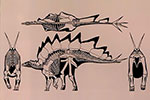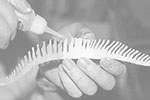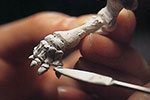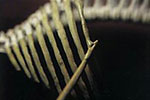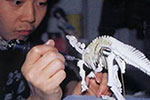Contents
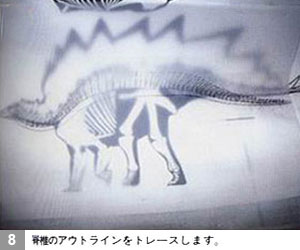
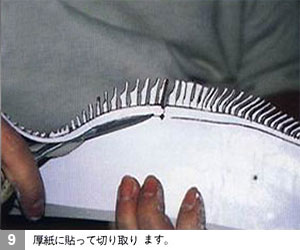
Vertebrae challenging to sculpt because there are so many and each in the series is a slightly different shape. If you don't get their individual proportions and the spacing between each exactly right then errors add up. This can result in the body having the wrong shape entirely. Shigeru uses a very neat trick to overcome this difficulty; he traces the vertebral column to paper, then cuts it out as a template for sculpting.


Once the paper spine has been cut out it is hardened with glue. I'm assuming the photo shows cyanoacrylate ("super glue") soaking into the paper and discoloring it. Once the glue sets the paper template will be rock-hard. I use an "accelerator" reagent to force the glue to set almost instantly. There are several cyanoacrylate accelerators on the market and I find the pressure pack spray type most useful.
The 2-part epoxy clay is applied directly to the hardened paper template and molded to the shape of the vertebrae centra (i.e. the drum-shaped disc at the base of each vertebrae).
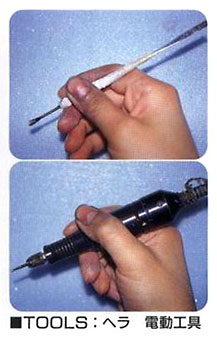
Tools shown are a metal
sculpting tool used to shape
the soft epoxy clay and a
power rotary tool (I use a
Dremel brand tool).
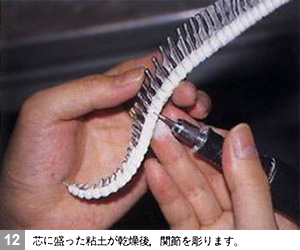
a high speed rotary tool.

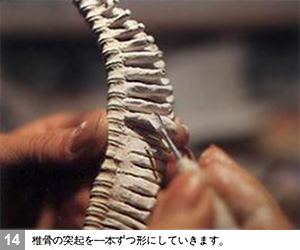
Epoxy clay is then applied to the template to form each vertebral spine (i.e. the spike that rises vertically from each vertebrae). Once hardened, additional clay is applied to form each transverse process (i.e. the bits that stick out either side). This is a slow and tedious part of the sculpt.
Request
If you have additional information, resources, images
or can help with translation of the Japanese descriptions
of this material I am very keen to hear from you.
Please contact me.
